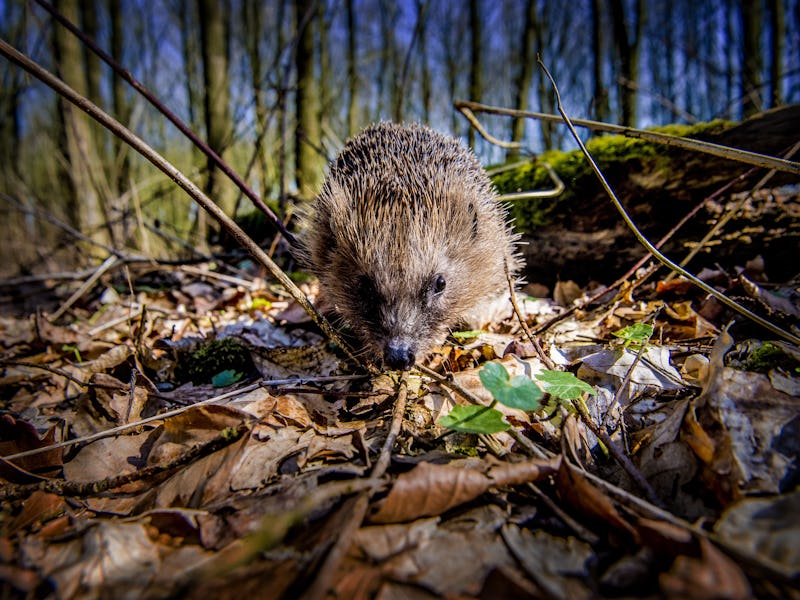6 venomous mammals that roam, fly and crawl on planet Earth
Not all are harmful to humans, but some are pretty gnarly. Here are six.

When it comes to venomous animals, snakes and spiders usually come to mind.
In fact, there are a number of venomous mammals out there that can do a lot of damage to their predators — or their prey. From bats to the solenodon, these mammals range in size and form. Their venom, too, has a range in terms of its biochemistry and mechanism, shows a study published in the journal Toxicon.
Venomous mammals have a storied history — primitive venomous mammals once roamed the Earth — and scientists are still learning more about the power they might hold. For instance, as the authors of the Toxicon study note, less-studied mammalian venoms might even be “promising therapeutic agents.”
6. The vampire bat
Vampire bats feed on blood, and the venom helps: It causes anticoagulation and vasodilation, or enlarged blood vessels, notes a study published in the journal MDPI Toxins.
Hello to you, spooky bat.
Vampire bats — a symbol of Halloween and all things spooky — might get an undeservedly bad rap. A recent study revealed something rather friendly about them: They have strong social bonds, and care not only for their own offspring, but for others’, too. It take a village (of vampire bats).
Vampire bat venom has potential as a therapeutic treatment. It has blood pressure-regulating properties, which could make it helpful for treating a variety of conditions — hypertension, heart failure, kidney disease, and burns — finds a study published in the journal MDPI Toxins.
5. The lowly mole
A lawn pest for many, the mole known for tunneling underground in its humble existence. But the European mole has a nasty trick up its sleeve: It uses venom to inject and paralyze prey, stun them, and go in for the kill.
That’s a helpful trick, since these small critters — they’re about five inches long — are particularly hungry. European moles can eat up to half their body weight per day, finds a study published in Nature.
4. The strange platypus
They’re furry and strange and cool… and totally dangerous. With a spur in its hind limb, the male duck-billed platypus can stab its prey and release an incredibly painful venomous substance.
The venom of a platypus causes swelling, “long lasting and excruciating pain,” nausea, cold sweats, and swelling of lymph nodes, finds a study published in the journal MDPI Toxins. While there aren’t any recorded human deaths from platypus venom, the venom — for which, so far, there’s no antivenin — can kill dogs.
Perry, is that you?
A bit of light in the dark: Like vampire bat venom, platypus venom might have some therapeutic uses down the road. But the science so far isn’t enough to make use of that potential. For now, if you have the opportunity to get up close and personal with this funky mammal, perhaps just keep a safe distance.
Cute little platypus. Who knew?
3. The unassuming Solenodon
Living in the forests of Caribbean islands — like the Dominican Republic, Cuba, and Haiti — the Hispaniolan solenodon looks to be as unassuming as it gets. These furry, long-snouted creatures are nocturnal, sleeping the day away and hiding from anything that might find them delicious. When threatened, they make a grunting sound like a pig, as Wired reports.
But the soledodon — whose name means “slotted-tooth” — is on the hunt for prey of its own, and it has a secret weapon. First, it uses its long snout to sniff out earthworms, insects, and even carrion. The solenodon isn’t a terribly picky eater. Then, like a snake, it uses those special, grooved teeth to inject its venom, leaving its prey weak and easier to overtake.
2. The spunky Hedgehog
The way hedgehogs use venom is a bit different from the other mammals on this list, and honestly, it’s kind of badass. Rather than creating venom of their own, hedgehogs use venom from other animals to give themselves an upper hand.
Hedgehogs chew on poisonous toad skins — to make the spines on their back — which are really modified hairs — venomous, finds a Nature study. They literally pull a Kirby and steal the toads’ powers.
I mean, come *on*.
Also wild:hhow researchers found this out in the first place, back in 1977 when the study was first conducted. They observed hedgehogs before and after they chewed on the toads, and then “jabbed” their own skin to see which pricks caused more burning and redness.
So, yeah. The adorable, spunky little hedgehog has a bit more going on than it seems. The popular pet makes hearts swoon on Instagram, but be wary of those spines.
1. The defensive Slow Loris
This one is a bit of a bummer. The beyond cute slow loris, featured widely in YouTube videos and which seemingly loves to be tickled, isn’t enjoying itself at all. In fact, when the tiny primate raises its arms, it’s secreting venom from specialized glands in an effort to defend itself.
As the only venomous primate, this is a nifty trick. The venom comes from a gland on the inside of its elbow, and a loris will mix the venom with saliva before biting its victim, reports the International Animal Rescue.
It’s much nicer to think about a slow loris just having a really good time enjoying some tickles, but sadly, lorises are only trying to ward off the human who’s freaking them out. And if they’re successful, the fate for the human could be far worse than it is for the loris: Slow loris venom can lead to anaphylactic shock and even death in humans.
Next time you’re enjoying a hedgehog in a Santa hat or musing about Sonic the Hedgehog’s superpowers, count yourself lucky that you’re behind the safety of a screen.